Can you teach yourself this stuff?
12/17/2022
I'm a relatively intelligent person. For most of my adult life I cultivated the 'left side' of my brain, I studied accountancy to degree level and for 20 years I've worked a job where I essentially judge the financial conduct of individuals and decide if and what censure they deserve. I examine what might be grey situations and break them down into a granular level until they become black and white.
When I started wing chun I applied this type of thinking to my training. I sought to understand everything, just like about 99.9% of the people in Sheffield and Hong Kong I trained with. But Chu Shong Tin was different, he was very clever but somehow he had managed to remove that type of analytical thinking block and as a consequence changed the way he moved. A great pity to me is that although he was able to change himself, his teaching method usually fell back to the old way of thinking/describing and his students were nearly all unable to make the great leap to something different. When I started to train as an Alexander Technique teacher, again I tried to apply my analytical mind. But with the help of kind teachers I was shown thousands of times how my gauges of measurement were wrong, that I had incorrect kinaesthetic sense, that my mind was wondering off trying to solve problems that would be easily sorted if I got out of the way. I had to literally give up and see everything different. The process of change took several years before it was embedded (say my first 1000 hours of instruction as well as application in daily life). But of course when I came to try to show my friends and students how I achieved the change, I would at first fall back to my old way of thinking/describing as I did not have the tools to teach it. That has only become established in the last two years by learning to not only embody it in myself, but also do that whilst working with someone else. That is higher level skill and something that is rare in the martial arts to have a practitioner who can also teach. So the topic of the blog is can you teach yourself this stuff? You can guess my answer. Lets say that what I wrote above represents three stages. First the logical left brain thinking which most of us use and misuse. The second stage is the long process of transition to a means-by approach, and the third is not only having those skills but being able to teach. In my opinion you would have to be a genius to get to level two on your own without significant tactile help from someone. So, the person who wants to teach them self, to use the internet as a how to guide, is going to be using stage one of thinking. But somehow they are imagining that they can use stage three to teach them stage two. But of course you need stage two to have the skill to teach at stage three, so how could they bridge that gap? Its a virtually impossible leap to make. If people are telling you that you can teach yourself, that you are already the stage three master capable of self programming, they are very much deluded and still at an embryonic level of thinking. I may be an idiot, but at least I know I'm an idiot. Find a teacher who can do what they say. Find a teacher who has students who can also do what the teacher can do. Find a teacher who embodies what they say and cares about their students. Don't waste time watching and analysing videos on youtube because you are embedding the wrong thinking, unless you have already had a seismic shift already. Internet sifus may be well meaning, but they just embed fantasy ideas which, for CST lineage, detract from the legacy which CST left. Why don't they open a real club? Start with one student. Its hard enough finding time to write this without making endless videos. If you want to swim in the sea, go to the beach. Sitting in the bath watching your mobile phone won't ever be the same, even if you have a rubber duck.
2 Comments
Be yourself, everyone else is taken
8/9/2022
When you spent time in Chu Shong Tin's company you quickly realised that he was not interested in much else other than wing chun. He was an incredibly congruent individual, in that he was consistent in what he thought, what he said, what he did. Although he did choose to be in several videos, it was only to preserve his methodology of thinking. He did not produce any 'how to videos', and was in fact concerned that the footage taken of him whilst teaching class might be misunderstood and taken out of context. He was puzzled that visitors like myself chose to record him, behaving like people at a concert watching through their phone screens. In hindsight I do not blame him.
YouTube is a great marketing tool, but to me it feels like a mistake for teachers of internal arts to go beyond and sell instructional footage as if it is a substitute for hands on teaching. It does beg the question as to how much you really value their own ability as a teacher? We are not teachers of body awareness, there is so much to this than just that. There may be experienced 'students' who can get a lot out of it, but the risk is that the misinterpretation is likely to spiral and people may confuse knowledge with actual experience. Hence the inclusion of the image below - the picture of a pipe is no more real than a video of somone moving their arms in a wing chun style. It's a challenge in life to be congruent; as a teacher you need to attract students, to keep them interested and meet their expectations. It can be so tempting to exaggerate, omit a few details or allow others to make inferences . I see and hear it all the time when I watch vlogs and interviews. We are all human, but when we do it we diminish ourselves in the process. I'm both a student and teacher of wing chun and a student and a student and teacher of the Alexander Technique (AT). Training as an AT teacher over the last 5 years has led to to challenge strong held beliefs about myself, my body knoweldge and wing chun. Some ideas taught in wing chun do not make sense, for most the teaching methodology fixate on half of the bigger picture (prioritising ends over means) and there is a constant appeal to authority if orthodoxy is challenged. For me it's a minefield trying to bridge the gap without pointing out obvious flaws in logic. I don't want to offend people, but at the same time I'm offended by the amount of crap associated with an art I love. To keep things simple in my mind, I can point to a clear agreement in CST methodology and AT. A lengthening and expanding spine is primary for the body to work well. Without this simple but incredibly difficult ability then there is no freedom of expression and it's just dead movement. CST talked about raising the spine and he taught systematically with his hands how to do this. But he was only successful with a few people who were left with the ability to do it themselves after he passed. There are still a lot out there who say they teach it, they even talk about how their spine lengthens and touches a part of their brain (hmm), but I'm not sure how congruent these people really are when it's clear they are not doing what they say. Perhaps they believe it, or just enjoy an audience? Alexander discovered what he called The Primary Control. This sounds rather grandiose but what it is experientially is the relationship between the head, neck and back when they are in a lengthening and expanding state. Without a time machine I cannot go back to check if this is the same as when CST would sing his spine, but I'd put money on it that such a state was the primary source of his power. Where CST and Alexander would have likely agreed upon also is that a free spine is primary for good movement and that the limbs are secondary for developing power. Without the internal momentum of the spine releasing, most limb movement is likely to be based on localised muscular contraction. I don't think an individual can claim to be a teacher of two arts like tai chi and wing chun as they are not consistent in their methodology of how to move. A cat is a cat cannot change into a dog. Such a teacher who tries would be incongruent with themselves. Am I in a similar dilemma when I have two competing interests? Can I be a teacher of AT and wing chun? Well I'll step back a bit and say that as a teacher of WC my job is to use the tools I have (however I've gained them over 20 years) to teach a student how to have an integrated relationship of their head, neck and back, following from which I can teach the movements of wing chun. On that basis wing chun is a great testing mechanism of how integrated and holistic the students movements are and whether they come from a place of expansion. But my job is not to just set them up, it's to teach the thinking tools needed to do it themselves. If I can accomplish this then I'll be honest in my beliefs and therefore congruent. Sorting the wheat from the chaff is not easy. What CST said seems different to what the various translations of what he said, and also account has to be taken of the context. His students do not always agree, they teach from different perspectives (motivations) and he never gave direct endorsement to a successor. Also most of what he discussed in teaching where the signposts of success - looking at a map is no substitute for experiencing the terrain. I've covered a lot in the blog (mostly waffle), but there are a few key points which might inform my students. If you are not a student, but you read blogs and watch videos, then this really is as much a waste of your time as doing those things because you are not a wing chun student. You are a wing chun masterbator and you need to start experiencing wing chun for real. The only thing more worthless than that is the online sifus who seek to educate the world, but literally have no real students of their own. Empty vessel wing chun prophets trying to be someone they are not. I suppose you can fool some of the people some of the time... Stand on your own two feet
3/16/2022
Since being recently asked to record more of my teaching ideas into blog, I’ve been considering drafting something along the lines of ‘thoughts on approaching 20 years in wing chun’. That title would be a blatant lift from an excellent article by Susanna Ho, but the idea of distilling down 20 years of training slightly fills me with dread. However, the title of this blog works better for me as it is close to my heart and it covers at least three key areas.
Lower leg integration I recently read a comment from someone stating that in CST lineage the lower legs should be excluded in power generation. It really does surprise me how people interoperate information without much thought of the consequences for what it would mean. The postural system runs right through the body and is enlivened when we contact the floor and when that pressure shifts or increases. Most people are so stiff in the leg below the knee that they have no concept of how powerful micromovements of the tendons in the feet and Achilles are. The interaction of body movement through release in the feet is key to power generation. Whole body awareness means just that, the whole body. Force is not wholly or solely generated in one particular place of the body, be it the centre, dan tien or tailbone, because that makes no sense. It's the interrelation of the sum of parts of the whole body which gives the effect of it appearing it come from the middle. Trying to move from your centre is counterproductive (no creature on earth does that), but for arguments sake you could say that because a well-coordinated body moves as a connected unit then the centre of mass is perfectly in tune with that movement. But really, does that way of thinking get you any further in your training? In my experience it encourage the wrong type of thinking (ends before means) and leads to seeing wing chun as an academic skill and not a skill for life. Dependence One of the goals of a trip to train with CST was to be 'set up' by him to move powerfully but without effort. The hope being that with repeated experience you would be able to perform such actions independently. For most people this was to some extent successful, but it also led to an element of dependence on him as a teacher to provide the vital spark. Without that extra something, the improvements for most has been rather limited and their quest still goes on for the secret ingredient he took with him when he passed. After nearly 20 years of training I suspect I understand part of the problem. What if the area of the brain CST described as the nim tao part is really a brain function related to balance. Instead of seeing that as a specific area of the brain , you can see it as a particular way of thinking to bring about a better coordination in the functioning of the body. Most people are stiff, consciously and subconsciously holding onto mental and physical tension. Finding a way to let go and get out of the way of natural functioning is the only way to find balance. Balance in movement (poise) Balance involves released ankles and neck and just about every joint in between. It doesn't involve a tucked in the tailbone, leaning back, pulled in elbows or pigeon toes. It also does not involve overly relaxed areas because that is just as much an interference to proper functioning as undue tension. We need to be balanced so we are free to fulfil the function we are designed for, or how we are intending to use ourselves for. And fighting requires a particularly high level of freedom and balance. So, here is where things have gone wrong and how to improve them... Dependence (again) A person like CST with an incredible level of poise can communicate that ability by touch to someone else. With gentle manipulate they can 'lend' their coordination and balance to a student and let them know what effortlessness feels like. It's a bit like someone lifting you up gently under the armpits and you seeing your upper body as weightless. Of course it is not, but it does give you the opportunity of letting go of undue muscular use. It's also a nice feeling. The potential problem with the 'setting up method' (something I have been guilty of as a teacher myself), is by providing a gentle pressure to the arm of a student, you inadvertently teach then to try to borrow support from a third party. This can later translate to over reliance on a teacher, or even more common a tendency to chase hands as they enjoy the support someone else give them. The reason for the latter is that by learning to use the balance of others, we subtly lean, push and in the end become reliant on others for support. Balance (again) And this takes us to the point of the blog, not just to be your own person, but to rediscover how to fall into the space where you stand and rise up from their feet. To not look to connect to others (as that makes us dependant), not to focus on arms but stay back in our backs and use our spines as intended. And intention is really the point here, have an idea of what you truly need in yourself to be a mobile, flexible and a stable person as nature intended. If you can rediscover that idea, then you can potentially release your arms from and across your back and so move as intended without pulling you forward and down where you will likely end up if you follow old habits of movement. Independence In my opinion a primary goal of teaching has to be to help a student return to natural balance on the ground directly below them. Too much feeding force to them encourages a latent desire to find and manipulate the balance of others and they then loose a sense of their own poise. This for me leads to a sub conscious desire to chase hands, because the student learns to feel comfortable when they are ‘holding’ the opponent. So part of my intention as a teacher is to free the student of the need for me to set them up. Poise is not parasitic. None of this should be construed as a criticism of those who can actually replicate what CST could do, or even worse those who have been able to teach such skills successfully, it's just a chronicling of my changing understand over the last 20 years. Perhaps I'll change my thinking again, I'm very open to that. As ever, this blog is a jumble of (carefully chosen) words, it might make sense if you have walked the same path as me or you have already worked with me, or more than likely you will disagree with a lot of what I say as we do not have a shared experience. Fortunately I do not need the approval of a reader, as that would make me needy (dependant). Si Hings (big brothers)
7/23/2021
Click
This blog is here to signpost people to the Instructors page of our website which has been enlarged to include details of four of our senior students, Jon, Craig, Ziggi and Gavin. I want to recognise not only their abilty as wing chun practitioners but also the excellent work they have done in helping teach in class. You can click the link below to see a short bio of their training history in their own words, but I thought that I would add a bit here about how I see them. Instructors In over 6 years of running the class, we must have seen over 200 new students come and go. Even if they make it to the second lesson, not many make it past a few months. What sets out our four from the rest is good old kung fu, which transales to 'hard work over time'. There are loads of reasons why you can miss a class, a busy day at work, weathers too hot, too cold, sport on the telly - the list goes on. Talent is important, but there is something else which sets them apart. Jon is our oldest student, he came to our second class and was hooked from the start. Over 6 years he has pretty much been at class every week, probably managing 50 weeks each year. He is a busy school teacher, but unless is is forced to work late he will be in class on time with his notebook, readly to record what he has learned. I've never heard Jon complain, moan or have anything but a positive approach to training. Craig stated in 2015,or the first 5 years he would travel to class twice a week from his home Ripon, which is on average one hour and a half drive each way. Although he had studied wing chun before he was happy to start again with us. Just before lockdown he moved to Sheffield so he could commit more time to wing chun. I usually say to Ziggi that he does not need wing chun. He is naturally powerful and fast so why learn a martial art devoted to relaxed power? But Ziggi loves overcoming a challange. Shortly after taking up running he was covering marathon distances and recently he ran over 100km. When Ziggi puts his mind and determination into something it happens; he is a force of nature. Gavin is at a time in life when he could give up work and learn to play golf. He had planned to retire a while back and move to Bulgaria, but... Instead he comes to class twice a week as well as having 3 or 4 private lessons. He is not a big guy but I've seen experienced teachers turn white once he has clamped his hands on them. What these four have in common is the grit and determination to keep going. To train even when there are other demands, twinges and pains, when thing don't seem to be working. This is the true talent needed to succeed in any complex skill. For me that is what sets them apart and makes them true Sung Men. This is not to say that they are the best, or that they have nothing left to learn, far from it as all of us are miles from perfect. But, they have that key ingredient which can only blossom over the next few years. So from me, a simple thanks for being part of the team. July 19th, 2021
7/19/2021
My last blog was concerned with a methodology of teaching a student, but I deliberately left out a crucial point in the relationship which I call the ‘critical moment’. This is the point where it goes beyond the teacher imparting knowledge and experience and more about how the student can learn to take control of their own development. We can all reach such a point in our own training, but for a considerable period it does require a teacher to help you understand both how to get there and also what it feels like. Even when you find it unfortunately it can be fleeting and difficult to get back.
For me the critical moment is when my body and mind are in a good state of release (detached from trying) and when I go to move I can sense whether it will involve a stiffening and shortening of my muscles, or a more general release and expansion of myself. Movements look more obvious. Movement is pleasurable. At this point we not only learn that there is always a better way to move, there are a myriad of options to move, to move and think. It’s another one of those Matrix experiences where Neo not only realises that he can dodge bullets, but that he does not even have to. I’m not saying that we can do that, but what this way of thinking can do is help us experience reality for what it and how our perceptions of reality might warp the ways in which we think that we can move. This is not always possible in a busy class but my approach to teaching a private lesson is based around getting a student to this point. It might take a few minutes; might take an hour, but we both know when they are there. It can be tiring because actual thinking, thinking outside of our habitual box requires a focus that most people do not use in their day to days lives. True thinking is not mulling over the past or planning the future, its being in the moment. It does not involve feeling, because feeling is not thinking. This is where the term mindfulness in movement comes from. If you can sustain such thinking then improvement can be multiplied many time over in a single lesson. The benefit of reaching such a place in your thinking is that it changes your perceptions of movement and of yourself. That starts as physical but as there is no real separation between physical and mental then it is bound to change the way you see wing chun and the world. It’s clear to me that CST taught with similar principles even if he did not express it as such. With inexperienced students he would ‘set them up’, but they would have no conscious knowledge of how it worked because it was not based on impulses from their consciously controlled muscles. With experienced students he taught them how to achieve this themselves. When they lost it, it just took a look from him to remind them, like a spark to light the flame. The aim of all us students of wing chun has to be to understand this way of thinking and ultimately reach it on our own without the crutch of a teacher to help us. Teaching Methodology
5/24/2021
I hava to include a warning at the start of this blog that the method I am setting out is my own approach to teaching wing chun. It is not specifically CST method, it is an amalgam of 19 years of wing chun, 4 years or working with educators in an Alexander Technique school, and this last 12 months (when possible) intense one-to-one teaching with a dedicated group of students. My students may find this useful to better understand what I am trying to do, but as important it may offer some guidance to senior students who work with me a lot like ‘schoolteacher’ Jon, Craig, Ziggi and Gav who I hope that one will teach themselves in the future. In a sense this is still a work in progress so will likely evolve as I do, but it is worth articulating now as it is very much a workable method which has brought good results over this last year.
1.. Meet the student where they are This statement has a multiple of interpretations which are all relevant; a. A new student is not likely to be seeking the same thing as an experienced teacher is working on themselves. There is no point in trying to impart advanced internal methods to someone who just wants to learn punching and kicking. Find out who the person is and the reasons behind starting wing chun. Try to find a common ground so they understand the beauty of wing chun. If you cannot find that then you are not a good fit and they should go elsewhere. b. Don’t show off with skills which are well above the student’s level. They will end up trying to copy, or hero worship; neither is conducive to learning. c. Remember what it was like when you were at their stage. d. Train at the level the student has reached. Find where they can improve on that day and help them find it within themselves. e. Don’t lecture, work in the present as learning comes though the in-the-moment relationship. 2. Help them to stop pulling their bodies down CST talked about singing up the spine, in Alexander Technique there is a similarly vague concept of ‘going up’. I say vague as knowledge of either concept can only come from experience. Instead of asking a new student to rise up, use hands on guidance and words to help them understand how they are pulling themselves down. Everyone has tense muscles which constrict their joints and act to clamp the bones in a downwards direction. This is generally not done on purpose unless they have practiced a martial art which teaches them to ‘sink’. As a concept I find the idea of sinking totally counterproductive as it is a removal of life from the body. The release of muscles and absence of pulling down will allow the idea of going up to form and it will become automatic. It is not a doing, it is an idea. On a good day I might have such a state that I can communicate it to a student and they will follow the releases in my body without any words or encouragement, just by touching their body. At that stage if it is working well it’s likely that we have established a strong relationship and the student’s development will accelerate. 3. Shoulder girdle and arms I am forever telling people that their arms are not restricted to the bones falling out the side of their body, they include the muscles which extend down to the lower back. All of this area has the potential of pulling down the spine and acting as a drag. Your arms should be flexible. Not so you can swing them around, but if they are not free then you have reduced your own freedom to move, also tightness will have a knock on effect on other interconnected parts of the body. Also, I am not talking about stretchiness either, many people who have studied yoga are very flexible but there is no life in their limbs. Arms which are devoid of life are of no use and will force other parts of the body to work harder. 4. Pelvis and legs The pelvic girdle, although fixed, is similar in design to the shoulder girdle. Tension in the arms feeds to the lower back via the latissimus dorsi muscles and tension in the legs can grip the pelvis through the psoas (and probably other muscles as well). The majority of people are pushing their pelvises forward in daily life, this will increase in intensity with wing chun as they are trying to wrongly increase forward pressure. With hands on encouragement a teacher can encourage a student to release back their pelvis, let go of gripping in the groin and this will allow a widening in the lower back and release of the floating ribs. 5. Dealing with force If you push a person they will probably push back. Newton’s third law will mean that if they are smaller than you they might end up pushing themselves backwards and become unbalance as they try to defend themselves due to being precariously balanced on two feet. Most internal arts usually talk about grounding force so that a push is redirected to the floor. This is a very useful method for demonstrations but can put a lot of pressure on the body and leave it immobile. My personal preference is to use the antigravitational muscular system of the human body in order to manipulate the incoming force of an opponent, so they are forced to carry your body weight seemingly at the point of contact. This is easier to teach than describe in words. It involves a teaching providing pressure to a student in a certain manner so that their body learns the most efficient route to disperse the force through the muscles, tendons and joints. At this time it is done in a compliant nature the teacher demonstrating and then helping the student replicate it. It’s not about position. At this stage there is a lot to learn about the body. The best way to do this is break down your habits of use, collapse and tension, and learn to change them to something more useful. We cannot do this at once so we take the subconscious habits and bring them into the conscious. Once there we can examine them, repair them and return them to the subconscious. That has two benefits; if it is a good habit we can do it without thinking, just intent; and secondly not only have we changed our habits we have understood a method with we can use in everyday life to identify and improve unhelpful thoughts and habits when we meet them. If you develop this skill you will have less need for a teacher. 6. Stimulus to go wrong Once a student has done the above and has calmed themselves, it is time to introduce some none compliant force to test their ability. It might be pressure on the tan sau, a push to the body etc. The habitual reaction is to push back, but with training the student can accept the force into their body deal with it. This is really where the mind training starts. Up until now the students is provided a compliant force but now the force can come in different directions and intensity. The student learns not to change plan with each attack, but stick to their own plan. Go up, allow the force to enter their body and be free to move and adapt as necessary. 7. Power Once you have calmed you habitual reactions, released tension in your phasic muscles, your will start to sense a connection to your postural muscle set. These cannot be directly controlled in the same way as you can twiddle your little finger, They are access with the use of direction and intent. This takes time to sense and even longer to do on a consistent manner. Once you have access, you are unfettered from past habits (drills), you see a way of moving which is alive and in the moment. There are no separate arm movements, the whole of yourself supports all movements in a co-ordinated way. From here the word ‘art’, becomes the more important aspect of the term martial art. 8. Wing Chun Throughout this process the student has been learning wing chun movements as well, but once the student has a grasp of the above, wing chun as a martial art is not that difficult. There is limited movement available of the external body, and for a small fighting system like ours the range of external movement is quite restricted. However, the range of internal movements is unlimited in nature. The above method introduces a way to feel and express those movements when before they would be hidden by excessive muscular tension. This is really a very limited explanation, but I am hoping that is might assist students to understand what can seem a haphazard method of learning. In a way it is a method of learning to learn (or unlearn), so we introduce more freedom and connection to a more natural way of movement. My firm belief is that the body would naturally work like this is we had not developed unhelpful habits and thoughts which distort our use. By returning to more natural use, we can then hope to manipulate that as a method of martial arts, but first we have to understand the basic design principles and how we limit our own potential. Dan February 08th, 2021
2/8/2021
This could just change your life… This blog may seem to have an exaggerated title but sometimes we come to realisation that the way we see the world and our ourselves is so out of kilter with reality, that a seismic shift occurs. Very rarely does it comes to us in a Matrix-like red pill/blue bill bolt from the blue; and even if the realisation may strike like that the effects and changes thereafter are usually a trickle of smaller epiphanies which bring about the greater change. For some it alters nothing because breaking habit is literally one of the hardest things to do as it involves changing who we are. The ego does not like to consider we are not perfect. What am I on about? You are walking about in a permanent startle reflect which has shorted your muscles and is jamming your bones into each other and affecting every aspect of your movement. Though constant misuse of the body it feels normal and therefore change feels wrong. We have evolved to be on the move, to face danger only on an occasional basis. Modern life generally involved not only these real threats, but constant perceived attacks on the ego, stimulus from gadgets, orders from the boss; as well as the having to physically constrict ourselves into small spaces usually in front of screens. There is primarily a mental attack on you as soon as you get out of bed, and a physical entanglement of the body as soon as we engage with the constructed environment. Take a look at the models. The first one has an upright posture as we would had for thousands of years. Prior to the development of the prefrontal lobe there was no future or past to worry about, just the now to live in. Mindfulness was not a option as it was the only state to be in. Things have changed a lot. By the time you are about 5 years old the stress of life has started its gentle prod into startle posture, or as it is know fight, flight or freeze. The head is pulled down into the spine, the rib cage is pushed forward, the back arched and knees resultantly braced. Its not the same pattern for everyone and some people manage to avoid it, but it is a general constant in society. Wing chunwise this really does make a difference. Take a look at Chu Shong Tin, even as a old man his body was in a totally different state than even his top students. His head was erect on his spine, his shoulders releasing away (unfathomable wide) and behind his eyes was a burning light. To come back to the reason of the blog, a point that has been reinforced to me by years of teaching, is that the forward intention taught in the art has had the effect on many of further contorting the spine and pushing the rib case into a position it cannot sustain without undue muscular stress. The shoulder girdle for most has been fused into a forward pushing structure, elbows rammed forward which puts undue pressure on the lower spine. Humans did not evolve to lead with their elbows and chests, the ribcage should be pointed down, arm and shoulder structure rested on the back and releasing sideways before venturing forward. Anything else results in a constriction of the stature of a person. I can give one example of what this may feel like. Get on all fours and slowly crawl forward. Allow your head to lead the movement and allow your shoulders to release across you back. Do you sag your stomach and rib cage? Let your head lengthen away from your tailbone as if pulled by a string. Do you get a sense of length and width? All it makes is the idea of a nod of the head to release into movement instead of pushing your knees and feet. Now, stand up and move with the same idea of head leading. Can you do it or do you move by pulling your hips forward? If you do that, sense how that is drawing your head down onto your spine and pressuring your knees. Maybe do something non habitual like walk backwards. You will see that your head leads and body follows. If you could follow these ideas, and allow the body to unravel, you would get a sense that your shoulders could be in an entirely different place which is unfathomable. Not contorting the back forward but placed as nature intended. The clavical is the only bone structure attaching the shoulders to the rib cage, the arms are not just the bones hanging down they are the muscle systems which start in the lower back. Need proof? Have another look at CST, are you ‘built’ the same? He struggled to pass on his ability as the wrong use was so endemic in most students he would have not known where to start. Clearly a released pelvis and erect spine where a good point (tai gong and sing). Relaxation would also help with the startle pattern. If you are wondering where to start the change, then standing practice and SLT is a good start. Every time you attempt a movement, be aware that you will be drawn forward and instead focus on how your interaction with gravity is more important. Do not flare the ribs or brace the lower back, the support comes from your only point of connection with the world so use that (your feet). The secret likes with the support of the earth and the antigravitational muscles evolved to deal with the relationship. That relationship is more important than other forces or stimulation you will meet (which will trigger your startle reflex), so learn to be comfortable with it. Your feet should be alive, so do not collapse into then. There is more to do (or not do) than that, but it’s a start. Feelings, nothing more than feelings...
12/1/2020
I recently watched a video of CST setting up a senior student to do a pivoting side slash. CST set up the student several times, gave explanation for why it was difficult for the student, and then demonstrated the movement (effortlessly) himself. In some ways the video was no different than any other of him, or what happened every night in a typical class. What was interesting was afterwards I saw and heard explanations from at least 4 very experienced wing chun teachers who each disagreed with the other about what had happened, and essentially how CST did the movement. You might be surprised to hear that I did not agree with any of them. I would not be surprised to hear than none of them would agree with me! Buy why the differences?
The teaching methodology of CST was that he would allow a student to do a movement in their own way (they usually did it incorrect), he would show them what they did, show them what it should feel like, then set them up to do it in the way he felt it should be done. That method was repeated time and again until hopefully the student was re-educated. If all of the students got a similar education why would they not only feel very different, but also explain the methodology they learnt so differently later on? Here is the problem. When a student first copies a movement they are confident that it is correct, It feels correct. CST would then set them up to do it differently and obviously the feeling was very different (it felt wrong). When they try to recreate the movement they rely of feeling, but if we go to the start of the paragraph then we already have established that their feelings are incorrect. Their kinaesthetic sense was proven unreliable (like a set of broken scales) Last year I went on a race track day; I drove a Ferrari and an Aston Martin for 3 laps each. As I drove into tight corners the instructor said to me to keep accelerating until I reached the relevant marker on the side of the track. Although I heard him I found myself braking heavily way too early. Each time we went around I got a bit braver, but although I wanted to keep accelerating my brain said no and put the brakes on (the exact opposite to what I was told). I felt that I would crash as my belief (backed up with my feelings) told me it was not possible for a car to move in that way. Afterwards I was taken around the track as a passenger or a touring car race driver, even in a slower car I was astounded by the speed and control, it was on another level that I thought existed. Even if I had got a second chance to drive, I would not have been much quicker. The fact is my sense of feeling needed to be re-educated totally as they were unreliable. I was inspired but really that is only the start. The only way to learn to drive like that would be go around thousands of times with an instructor, follow the instructions of when to turn, break, accelerate etc until I knew what was possible. After that point, I would be able to start experimenting as to whether a change in my own instruction would make me quicker. However, my feeling would not be the arbiter of speed, the evidence would have to be the clock. So, to get back to wing chun. When someone was set up by CST they usually commented that although incredibly powerful, they felt nothing. However, with more experience a student starts to develop an awareness of the connectivity of the body and the inter-relation of joints and muscles etc. The process that you are trying to understand is how the various parts of the body inter-relate (and are co-ordinated by thought) and for a long time in the process feeling is really counter-productive to doing this. I am not entirely sure many people have grasped this difference, but I say now that if you rely on feelings instead of an educated system of habits of use, your wing chun will not be of an internal nature. You will be trying to use wing chun techniques to make up deficiencies in your body use. Most people interested in CST method wing chun do not need to learn more wing chun, they need to relearn to use their bodies without using feeling and sensitivity as a guide as what they are currently using is inherently unreliable under pressure. You need to understand how the body co-operates with gravity, how the release of joint in one direction creates a counter stretch in the next muscle group and that affects the whole. Wing chun then becomes a method of manipulating your own body structure which is instigated with a thought. I am going to be honest and say that although everyone needs to relax more, as an instruction it is generally useless in most contexts. Sometimes you need to relax a muscle, but that is usually to get a counter response from another part of the body so the whole is in balance. It is the balance of the whole which you are seeking, with no direct thought about relaxing of individual parts. This idea of training is a real challenge for most people, to ask someone who has developed a sensitivity of feeling and alignment to reject that system, to rely on over-aching instructions relating to how the body works optimally; its really tough. Even when you see and experience the truth it is hard to accept. The question then is how can you learn something which is specifically about kinaesthetic sense at the same time as rejecting bodily feeling. Well, in the same way as you would need to sit with an experienced race driver and do as you are told to learn to drive professionally, you need a lot of time with someone who can do it it better than you who can guide you. Someone who has walked the path and made the same mistakes which you will have to make time and time again until your successes outweigh your failures. Even if they are not a teacher, they may be able to provide a more subjective view than you have yourself. The first step for myself was over a decade ago when training with Mark and Jon, we consciously chose not to complete with each other but to assist and provide feedback. That opened a door to understanding which continues to fascinate me. Like Riding a Bike
8/31/2020
A common analogy used in martial arts and any other potentially complex endeavour, is that ‘its like riding a bike’. The inference being that once you physically understand the process it becomes second nature.
There a few important areas where I think there is commonality. The first is the control of the balance required by riding a bike is too difficult for the conscious brain, so we have to use the part which controls our balance. In CST wing chun you hear the term Nim Tao, rear brain or subconscious; for me the part of the brain which controls natural balance is where I want to activate. Most martial artists are not in balance, they hold stances, postures or alignments (all good for static lifting work), but the body is designed for subtle poised movement, so better to think of a dancer or a young child playing if you want to be in better touch with your body. If you have taught a child to ride a bike you will recognise that the hardest part is not the pedalling, it is the starting off. I am sure that there are lots of parents out there that can remember running behind your child holding onto the back of your kid’s bike with the child yelling ‘don’t let go’. Its back breaking work. Eventually you do let go, they are delighted, but when they try to do it again the fear sets in, they tense up and you have to go through the process again and again until they recognise that they will not fall over. The actual cycling part thereafter is pretty easy and soon they shoot off and leave you running behind looking like an overprotective fool. This reveals the whole crux of the issue of why CST found it difficult to pass on his ability for so many years. He would put his hands on a student to show them how to let go of tension, how to gain their balance, and they would be able to release into balance just as a child cycling away. However, every student thereafter became obsessed with the releasing away bit and missed the most important part. The part which starts off the whole process. I believe that as children we were all told to try harder, to put more effort into what ever we did, and as a consequence the whole movement pattern of the body for the majority of people has been strangled. There is a choice… you can subtly brace your ankles, lower back and neck and then push, or release into you full length and width before you move. It’s not a conscious choice for most as they have done it as habit their whole life, but it sits on the border of the conscious and subconscious mind and its somewhere you can find if you train in the right way. If you take the analogy back to being on a bike, think about how you start off, my guess is pushing down hard on a pedal, lock the neck and shoulders and put in some effort. Why not freewheel instead? Have you tried instead of pushing down on the pedal thinking about how the other leg comes up instead? The way I teach at the moment is that we often get to a red pill/blue pill situation. I will set a student up several times to let them have a feel of what they are looking for, and then I apply pressure and ask them to make a choice, find a way to release into the movement or recognise that they are pushing. Once you see enough times that it is a conscious choice, one which can lead you to either habitual bracing or subconsciously controlled balance, then it becomes easier to realise that the hand shapes and movement of the art are not that important; the body tends to sort itself out. I honestly think that the obsession with forms is really missing the point of them. All movement is fundamentally easy the more we understand the primacy of initial choice we make and the consequences if we make the wrong one. Without that its like trying to ride whilst still holding the brake on. Standing practice in CST is very important but it can be a bit of a swiss army knife which gets misused. It’s a chance to let go of habitual holding of muscles, to let go of the racing mind and also calm the emotions. But if you approach it in the same habitual manner of the everyday life you might see it as standing statically and waiting for some divine intervention. Standing practice for me is just moving in micro form; am I in process of standing up to full height or about to sit down?… well both. I am being alive. Not practicing being alive, but being alive. Not lost in some part of a meditative state, but in the room ready to interact. Not easy for an introvert like me but something which with practice that becomes easier. So to get back to the analogy, riding a bike is easy once you are going, but its hard to get going if you have both feet on the floor for stability and are holding the breaks down. So the thing you need to practice is finding that place of decision, to observe the thought in the mind when the point comes, and see if by waiting and following the process then potentially there is something else in you. There is, I know that there is, but trusting a process is difficult when habit is easier to rely on. That is all I really practice at the moment, and mostly what I teach, so it must be working a bit or I would be a very lonely wing chun teacher. CAN WE, WILL WE, WHEN WILL WE REOPEN?
6/20/2020
CAN WE, WILL WE, WHEN WILL WE REOPEN?
I hope that everyone is well and has been able to continue training over the last few months. The online classes have been a really pleasant surprise for us, they have allowed to devise a method of group teaching which supplements our usual one-to-one coaching approach. If you have not been able to join, we have maintained the core group of the club very well with regular classes reaching 20 attendees. In the same way as when we entered the lockdown, government advice is changing quickly and there is potential that we could open the doors to a class in July. If that becomes possible, the question for us is what will that look like, who will come and what will we do. I am going to some ideas here for students to think about, and ideally you can text, email or FM message me with what your preferences are so we can get back to training in a way that benefits us all. My thoughts are:
The big question I have to ask students is will they come to class if and when the regulations allow it? I appreciate that some have health and financial issues and that they may have to wait. Financially I do not want to pay £30 to rent a room which will be empty, so I need to know who is interested? If there were only a few students would you pay £10 a session? My preference is to charge £8 drop in if the group is a good size, but would students be willing to pay say £30 a month instead (some months you would get 5 sessions, others you might miss one). So lots to think about. I need to hear from you to get an idea of where we are at now. I have been teaching privately over the last month and I am very encouraged by the development of our senior students who will be able to assist us with teaching as they have a good grounding in Sung methodology. Exciting times ahead. |
AuthorKeeping you up to date with what is happening in class Archives
December 2022
Categories |
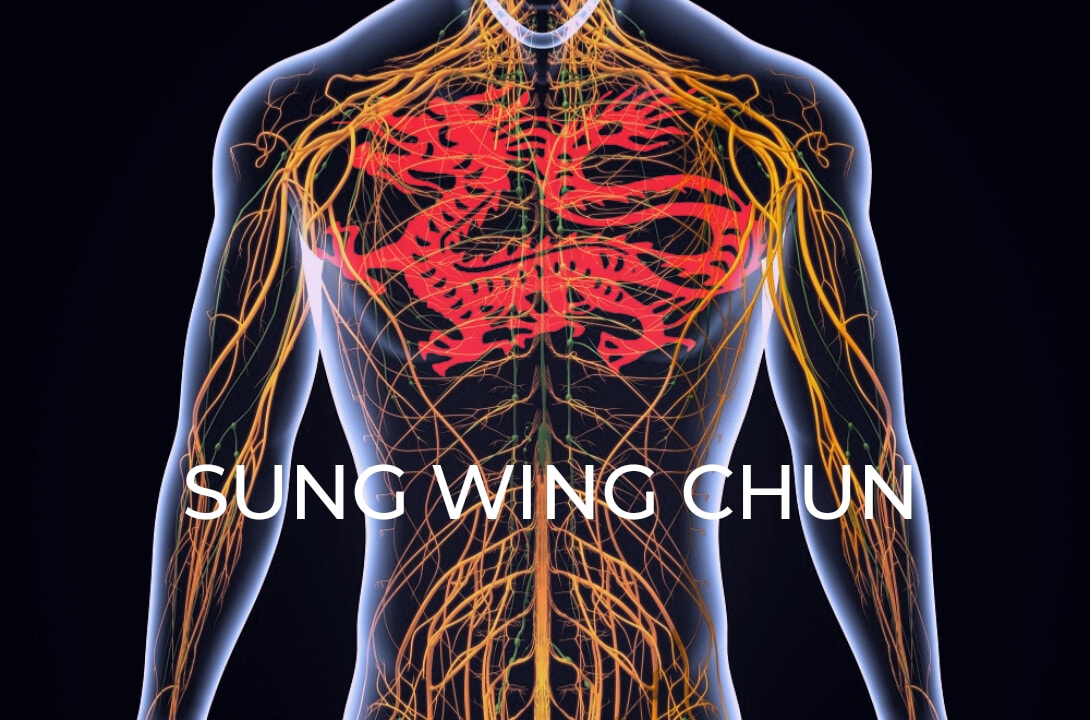

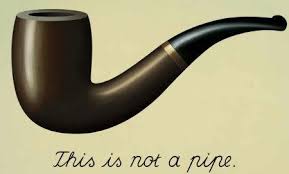
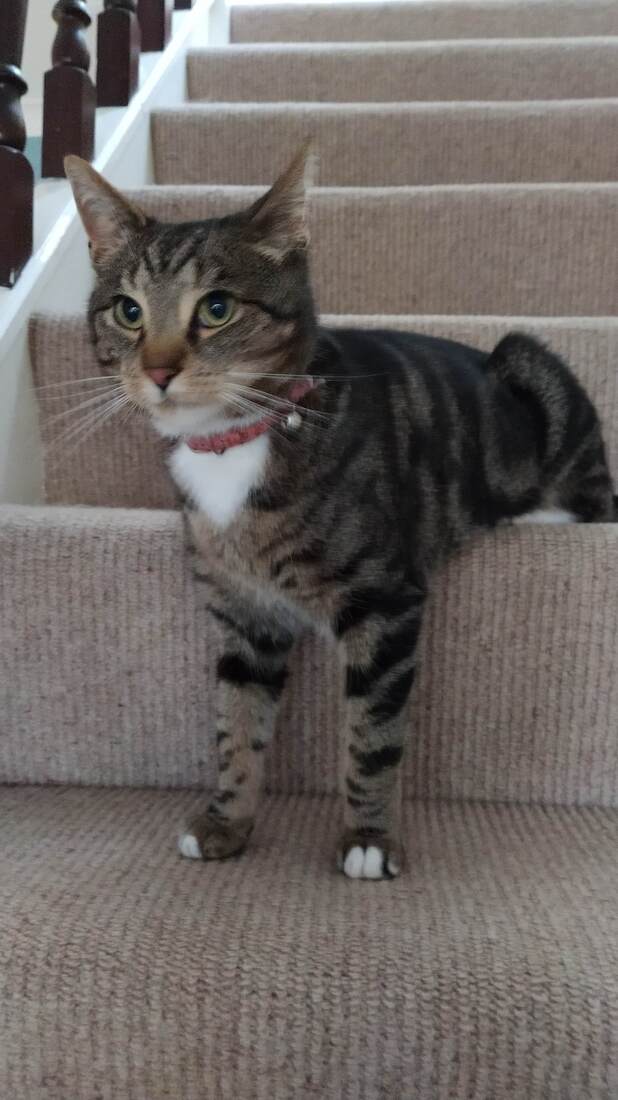
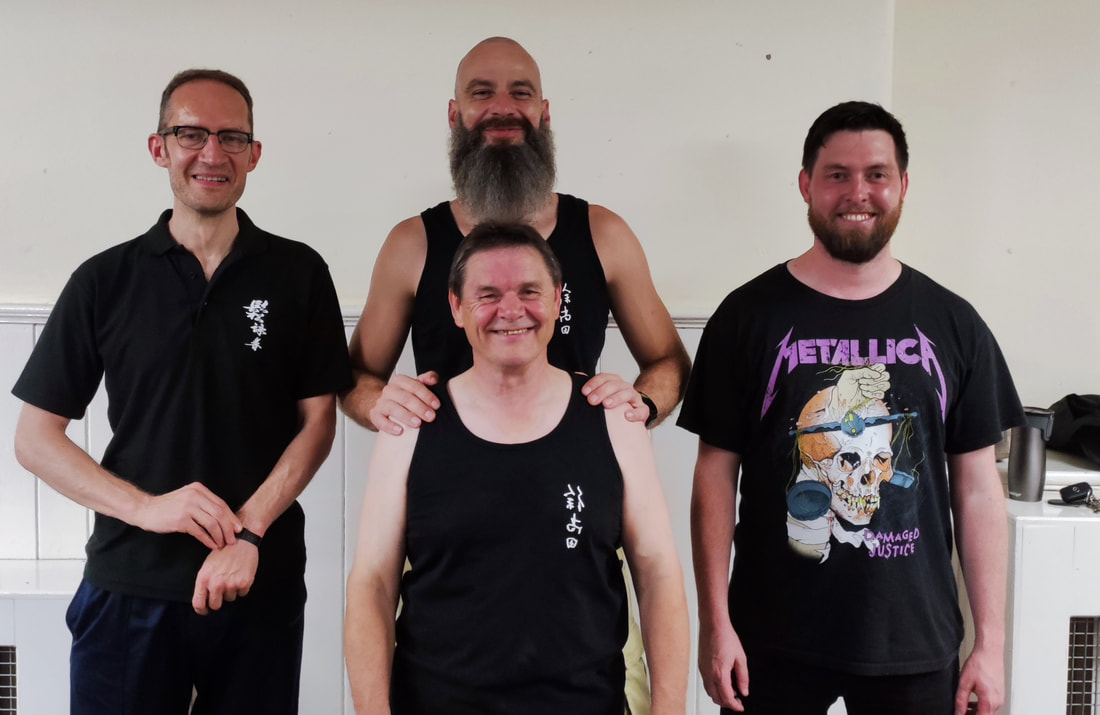
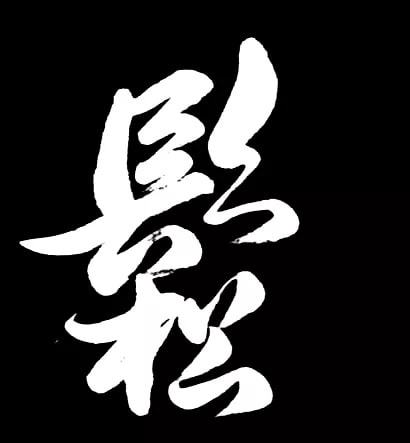
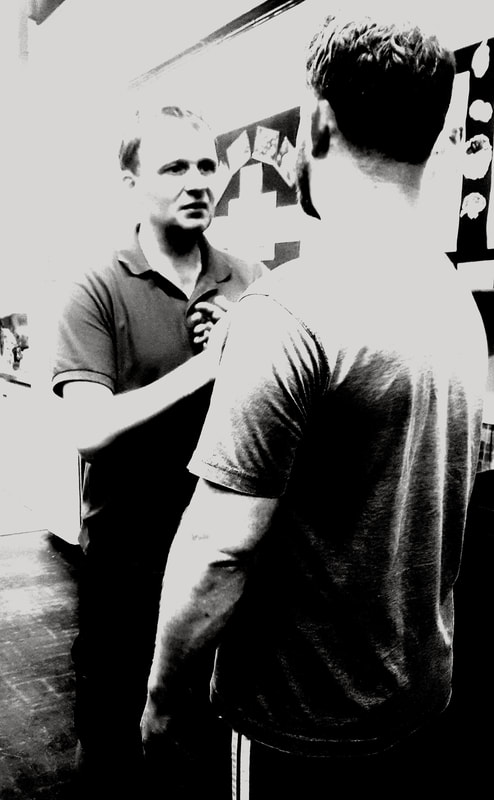
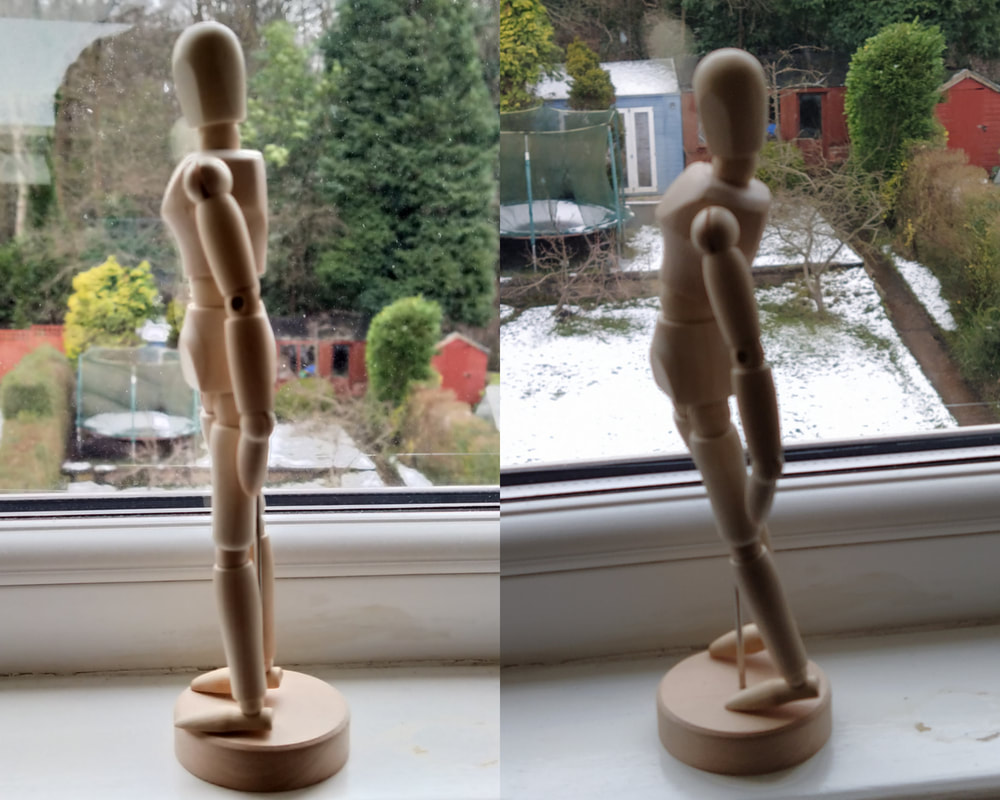
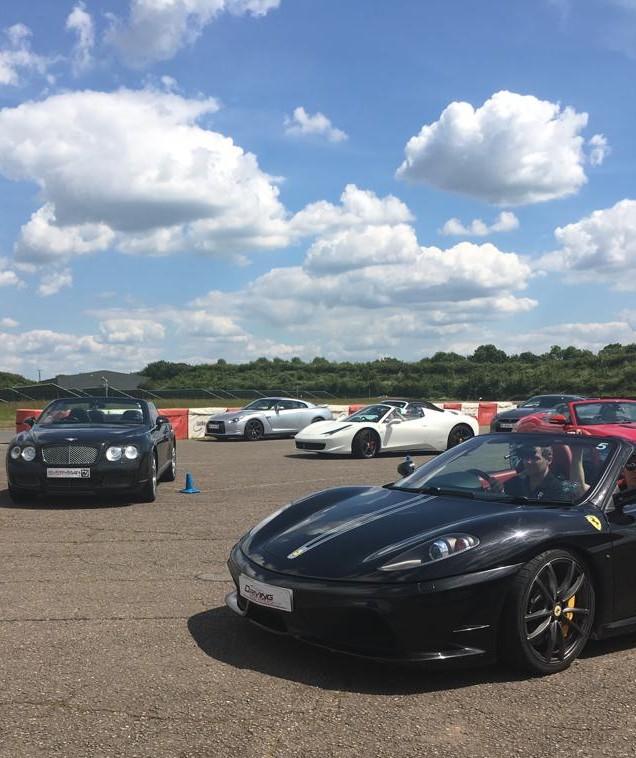
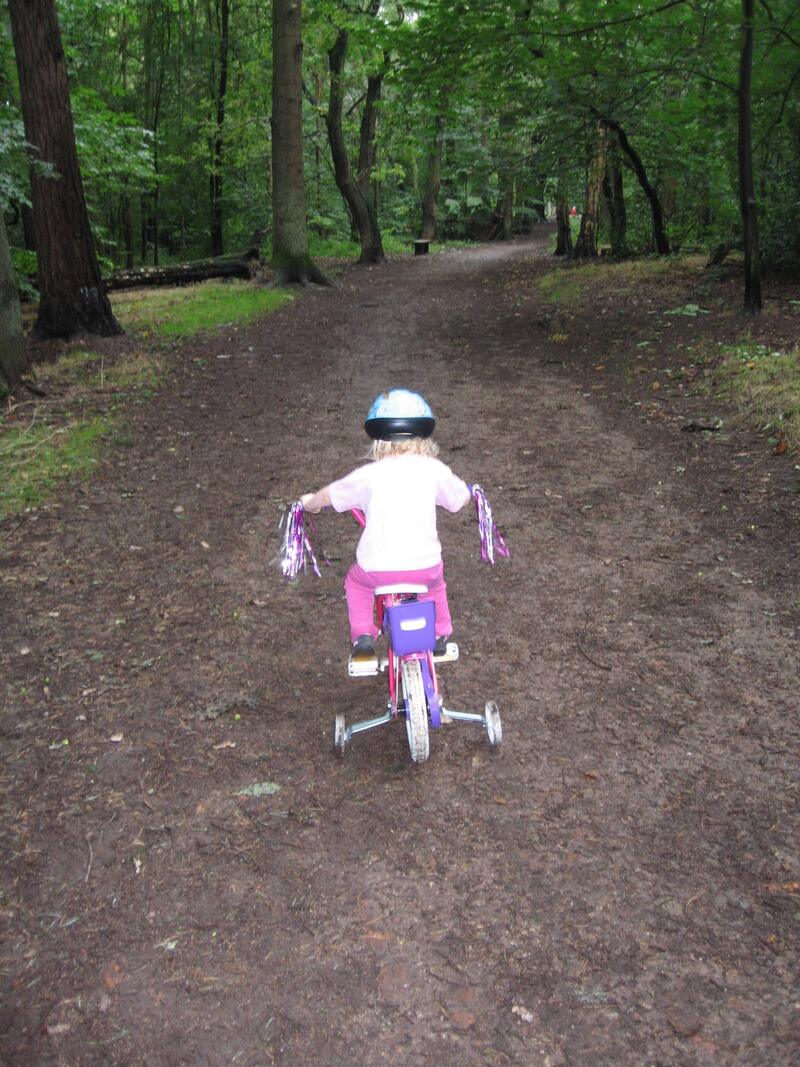
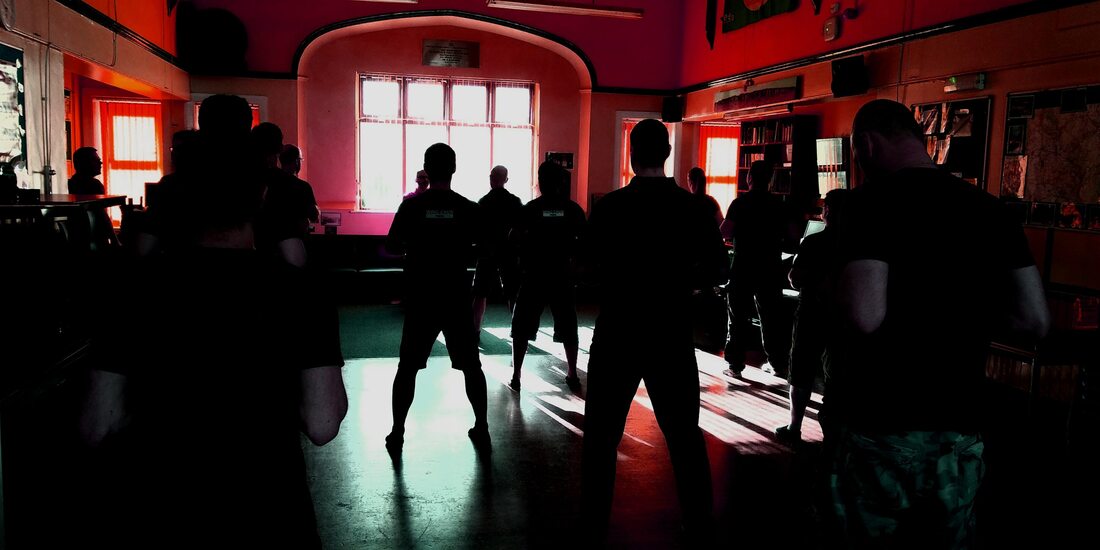
 RSS Feed
RSS Feed